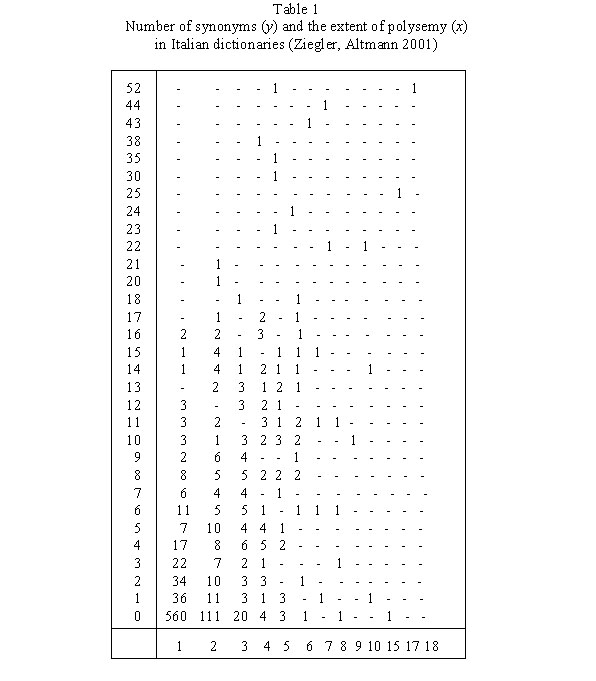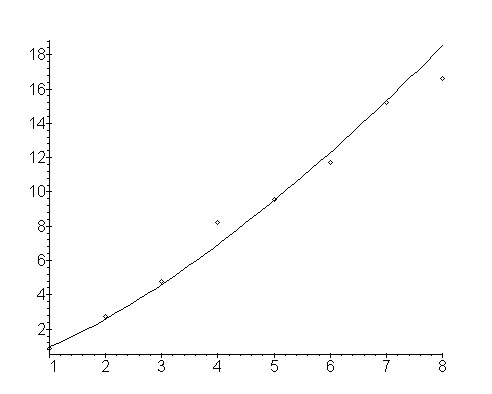Polysemy and synonymy of words
1. Problem and history
The problem is very simple: If a word obtains new meanings, i.e. if its polysemy increases, then it penetrates into the semantic domain of other words. Consequently, these words become its synonyms. Thus the more polysemic a word the more synonyms it has. In dictionaries the different meanings are usually denoted with numbers or letters. Counting them is the simplest way of measurement. Synonym can be found in a dictionary of synonyms. The hypothesis was set up by Köhler (1990:8) in the framework of synergetic linguistics. Its testing was performed by Ziegler and Altmann (2001).
2. Hypothesis
The greater the polysemy of a word the more synonyms it has.
3. Derivation
The relative increase of synonymy (y) is proportional to the relative increase of polysemy (x), i.e.
(1)
resulting in the power law
(2) .
.
In Köhler´s synergetic sense
where L-Polysemy and L-Synonymy are given in logarithmic units, b is a constant and u is a linguistic factor which gets a special interpretation. Thus we have
L-Synonymy = u + b(L-Polysemy).
Taking antilogarithms we obtain the same result as in (2), wehere  .
.
Example. Italian dictionary
Ziegler and Altmann (2001) measured the polysemy of 1079 words from the Italian dictionary by Deveto and Oli (1995) using the presentation in the dictionary. For each of these words they counted the number of synonyms in the synonymy dictionary by Stopelli (1998) and obtained the data in Table 1.
In Table 2 one finds the mean number of synonyms for x-polysemnatic words and the theoretical curve (2). Since data for x 9 are not represntative, they were not taken into account.
The theoretical curve is y = 0.9690x1.4192 and D = 0.97. Further languages must be analyzed. The empirical points and the theoretical curve are in Fig. 1
4. Authors: U. Strauss, G. Altmann
5. References
Deveto, G., Oli, G.C. (1995). Il dizionario della lingua italiana. Firenze: Le Monnier.
Köhler, R. (1990). Linguistische Analyseebenen, Hierarchisierung und Erklärung im Modell der sprachlichen Selbstregulation. Glottometrika 11, 1-18.
Stopelli, P. (1998). Sinonimi e contrari con generici, spezifici, analoghi, inversi. Milano: Garzanti.
Ziegler, A., Altmann, G. (2001). Die Beziehung zwischen Synonymie und Polysemie. In: Ondrejovič, S., Považaj, M. (eds.), Lexicographica ´99: 226-229. Bratislava: Veda



